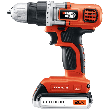Troubleshooting a Door Bell
Written by Lee Wyatt (last updated August 17, 2020)
It can be pretty annoying to have a door bell that won't ring when it is supposed to. While it may be very tempting to go out and replace the entire unit, that can be pretty expensive. Instead, why don't you try troubleshooting it first? When troubleshooting a door bell you don't need to be an expert electrician, but you do need to take a few precautions. As you follow this simple troubleshooting guide, be sure that you are careful as electricity is a dangerous thing. At the very least when you are working with any live wiring, wear some non-conductive gloves to help protect you from harm.
- Look at the button. Begin troubleshooting a door by taking a look at the button itself. This means that you need to remove the screws that are holding the button in place. Once those screws are removed, gently pull out the button assembly, making sure that the wires do not fall back into the hole. Use an old toothbrush and clean away any dirt, debris, or corrosion that you may find under there. Take a look at the wires and make sure that they are not broken, if they are, restrip them and reconnect them. Replace the button and test it out. If there is still a problem, proceed to step two.
- Test the wires. Remove the button again, and disconnect the wires from the terminal screws. Make sure that you have non-conductive gloves on as you do this and remember that electricity is dangerous. Touch the bare ends of the wires together to see if there is any reaction. If the bell sounds, then you need to replace the button; if there is a slight spark, but no sound then check the chime; however, if there is no sound and no spark you will need to test your transformer.
- Check the chime. Take the cover off of your chime, and check to make sure that all the wires are connected to their terminals. One of the leading causes for a faulty chime is that the wires have come loose for some reason. Remove any dust that you see in the chime box by vacuuming it out, and clean any corrosion that you see using an old toothbrush. Pull the plunger and see if there is any sound; if not then clean off any residue which may be stopping the works, and test again. If you find that the chime is still not working, then test the chime with an electric multitester. Place the probes of the multitester first against the "front" and "trans" terminals, and then to the "rear" and "trans" terminals. Make note of the results, and compare them to the voltage rating for the chime. If the power present is below two volts of the voltage rating, then replace the chime.
- Test your transformer. Locate the transformer for your doorbell so that you can test it. Typically there will be an exposed electrical box that will have the transformer attached to it. Check to make sure that all the connections are attached properly and that they are not loose. Use your multitester to check the transformer by touching the probes to the terminals. If the reading that you get is more than two volts below the rating for the transformer, then you need to replace it.
Author Bio
Lee Wyatt
Contributor of numerous Tips.Net articles, Lee Wyatt is quickly becoming a regular "Jack of all trades." He is currently an independent contractor specializing in writing and editing. Contact him today for all of your writing and editing needs! Click here to contact. Learn more about Lee...
Understanding the Gardening Calendar
There is a wide variety in planting times, growing seasons, and harvesting times. Generally speaking, all of these times ...
Discover More
Decorating in the Craftsman Style
Are you looking to make your home stand out? Having trouble picking the style that suits you best? If you answered yes, ...
Discover More
Easter Flowers
In large part, Easter flowers are pretty much a matter of local tradition. That being said, there are four different ...
Discover More
More Home Improvement Tips
Installing Motion-Sensor Lights
Safety is always an important issue to homeowners, and there is almost always something that can be done to improve it ...
Discover More
Replacing a Doorbell
Doorbells say a lot about your home, and when yours doesn't work this also says something. Replacing a door bell is a ...
Discover More
Outdoor Lights
Outdoor lights are a necessity around the home for many different reasons. Some of these reasons include being able to ...
Discover More

Comments